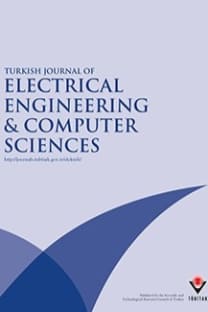New design of intelligent load shedding algorithm based on critical line overloads to reduce network cascading failure risks
Cascading failures, intelligent load shedding, critical line over-load, sensitivity analysis
New design of intelligent load shedding algorithm based on critical line overloads to reduce network cascading failure risks
Cascading failures, intelligent load shedding, critical line over-load, sensitivity analysis,
___
- N. Shah, A. Abed, C. Thomas, J. Seabrook, L. Pereira, M. Kreipe, S. Mavis, T. Green, “Final report of UVLS task force: under voltage load shedding guidelines”, Western Systems Coordinating Council, 1999.
- Y. Min, S.B. Hong, Y.D.Han, Y.K. Gao, Y. Wang, “Analysis of power-frequency dynamics and designation of under frequency load shedding scheme in large scale multi-machine power systems”, IEE International Conference on Advance Power System Control, Operation and Management, Vol. 2, pp. 871–876, 1991.
- J.R. Jones, W.D. Kirkland, “Computer algorithm for selection of frequency relays for load shedding”, IEEE Computer Applications in Power, Vol. 1, pp. 21–25, 1988.
- P. Kundur, Power System Stability and Control, New York, McGraw-Hill, 1994.
- P.M. Anderson, M. Mirheydar, “Low-order system frequency response model”, IEEE Transactions on Power Systems, Vol. 5, pp. 720–729, 1990.
- P.M. Anderson, “An adaptive method for setting under frequency load shedding relays”, IEEE Transactions on Power Systems, Vol. 7, pp. 647–655, 1992.
- B. Delfino, S. Massucco, A. Morini, P. Scalera, F. Silvestro, “Implementation and comparison of different under frequency load-shedding schemes”, Power Engineering Society Summer Meeting, Vol. 1, pp. 307–312, 2001.
- B. Qiu, “Next generation information communication infrastructure and case studies for future power systems”, PhD Dissertation, The Faculty of the Virginia Polytechnic Institute and State University, Virginia, 2002.
- D. Andersson, P. Elmersson, A. Juntti, Z. Gajic, D. Karlsson, L. Fabiano, “Intelligent load shedding to counteract power system instability”, IEEE/PES Transmission and Distribution Conference and Exposition: Latin America, Vol. 1, pp. 570–574, 2004.
- M. Parniani, A. Rajabi, Frequency load shedding in power systems, Iran, Power System Committee: Blackout Report Assessment, 2004.
- A. Arulampalam, T.K. Saha, “Fast and adaptive under frequency load shedding and restoration technique using rate of change of frequency to prevent blackouts”, IEEE Power and Energy Society General Meeting, Vol. 1, pp. 1–8, 2010.
- F. Shokooh, J.J. Dai, S. Shokooh, J. Taster, H. Castro, T. Khandelwal, G. Donner, “An intelligent load shed- ding (ILS) system application in a large industrial facility”, 40th Industry Applications Society Annual Meeting, Conference Record of the IEEE Industry Applications Conference, Vol. 1, pp. 417–425, 2005.
- Z. Ding, D. Cartes, S. Sirvastava, “New load shedding scheme for islanded power systems” IEEE/SMC International Conference of Systems Engineering, Vol. 1, pp. 1–6, 2006.
- V.V. Terzija, “Adaptive underfrequency load shedding based on the magnitude of the disturbance estimation”, IEEE Transactions on Power Systems, Vol. 21, pp. 1260–1266, 2006.
- Y. Liu, Y. Liu, “Aspects on power system islanding for preventing widespread blackout”, IEEE International Conference on Networking, Sensing and Control, Vol. 1, pp. 1090–1095, 2006.
- P. Cote, S.P. Cote, M. Lacroix, “Programmable load shedding systems, Hydro Quebec experience”, IEEE Power Engineering Society Summer Meeting , Vol. 2, pp. 818–823, 2001.
- H.M. Dola, B.H. Chowdhury, “Intentional islanding and adaptive load shedding to avoid cascading outages”, IEEE International Conference on Networking, Sensing and Control, Vol. 1, pp. 1–8, 2006.
- H. Seyedi, M. Sanaye-Pasand, “New centralized adaptive load-shedding algorithms to mitigate power system blackouts”, IET Generation Transmission & Distribution, Vol. 3, pp. 99–114, 2009.
- A. Saffarian, M. Sanaye-Pasand, “Enhancement of power system stability using adaptive combinational load shedding methods”, IEEE Transactions on Power Systems, Vol. 26, pp. 1010–1020, 2011.
- L. Sigrist, I. Egido, L. Rouco, “Performance analysis of UFLS schemes of small isolated power systems”, IEEE Transactions on Power Systems, Vol. 99, pp. 885–895, 2012.
- Y.Y. Hong, P.H. Chen, “Genetic-Based underfrequency load shedding in a stand-alone power system considering fuzzy loads”, IEEE Transactions on Power Delivery, Vol. 27, pp. 87–95, 2012.
- ISSN: 1300-0632
- Yayın Aralığı: Yılda 6 Sayı
- Yayıncı: TÜBİTAK
Online feature selection and classification with incomplete data
Implementation of neural network-based maximum power tracking control for wind turbine generators
Abdulhakim KARAKAYA, Ercüment KARAKAŞ
Metaheuristic linear modeling technique for estimating the excitation current of a synchronous motor
Mehrdad MAJIDI, Mohammad-Reza AGHAMOHAMMADI, Moein MANBACHI
Javad SOLEIMANI, Abolfazl VAHEDI, Abdolhossein EJLALI, Mohammadhossein Barzegari BAFGHI
The design of an embedded spinal cord stimulator
Development and optimization of a DSP-based real-time lane detection algorithm on a mobile platform
Gürkan KÜÇÜKYILDIZ, Hasan OCAK
A comparison of fuzzy logic and PID controllers to control transmitted power using a TCSC
Mohsen Hosseinzadeh SORESHJANI, Navid Reza ABJADI, Abbas KARGAR, Gholamreza Arab MARKADEH
